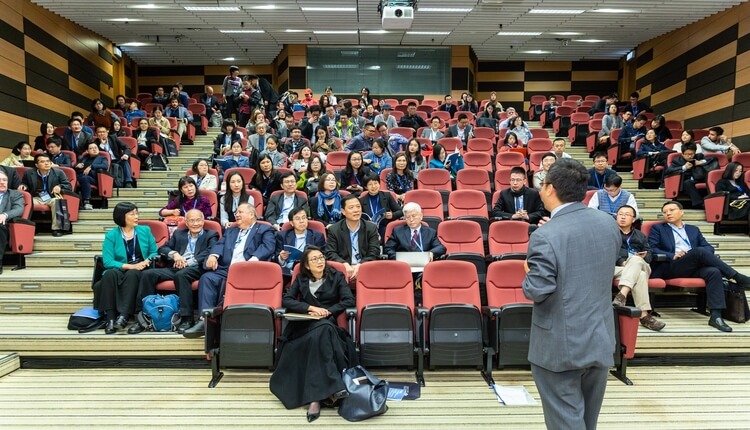A Researcher’s Guide to Making the Most of Academic Conferences

Academics know the importance of attending conferences as part of their career. Conferences provide valuable opportunities for networking, sharing research, and learning about new developments. However, until now, conferences have not had clear guidelines surrounding publishing practices. Academic journals have strict and well-defined processes for submission and peer review. But sometimes, standards at conferences run directly counter to the best practices in academic publishing. In addition, there has been a rise in “predatory conferences” that take money from hard-working researchers. In response to these trends, several groups of researchers and publishing experts in academia have created guidelines on best publishing practices for academic conferences. In this article, we will talk about these new guidelines and what they mean for you, as well as look at how to avoid predatory conferences.
Conference Publishing: What is GPCAP and Why is it Necessary?
Research sponsored by industry groups is often the focus of conference presentations, particularly in the scientific and medicine fields. However, each industry group has their own set of practices they prefer to follow which do not always support important research values such as data transparency. To address this problem, a group of publication professionals created the Good Practice for Conference Abstracts and Presentations (GPCAP) guidelines. These guidelines were conceived during a presentation regarding the Good Publication Practice (GPP3) for industry-sponsored research. During the presentation, many attendees had questions about how to apply these guidelines to conferences, and the presenters realized a separate guideline was necessary.
So, what is different between the research we see at conferences and journal publications? For one thing, the logistics of conferences make applying journal publication standards difficult. For example, different researchers than the authors of the paper might participate in creating conference materials such as posters. The peer review process is also different. One advantage of conferences is they allow researchers to present research still in progress. Conference organizers review abstracts and decide which presentations will be interesting and important for conference participants. But this review is not as intensive or as substantive as the peer review which takes place at academic journals. Because of this, it is critical for conferences to ensure that presenters are very open about who sponsors their research financially and who is involved in the process.
GPCAP Guidelines: A Summary
The GPCAP guidelines cover numerous different scenarios and considerations that should be made when formulating conference publication guidelines. The GPCAP is divided into six sections: authorship, conference abstracts, conference presentations (posters and slides), encore abstracts and presentations, copyright considerations, and citing conference material. Some key takeaways of each section are summarized below.
Authorship: All authors should be involved in the creation of materials such as abstracts, slides, etc. Authors should disclose any conflicts of interest. Any assistance from medical writers, translators, etc. should also be acknowledged.
Conference Abstracts: Abstracts should include the study identifier (i.e., clinical trial registration number) to facilitate linkage between conference presentations and future publications. Conferences should not count authorship, financial sponsorship disclosures, study identifiers, etc. towards the abstract word count.
Conference Presentations: Presentations should list all authors and detail their contributions. Study identifiers and financial sponsorship should also be disclosed on presentation materials. If new findings are made between the time of abstract submission and the time of presentation, this should be clearly stated.
Encore Abstracts and Presentations: When research is presented at more than one conference, previous presentations should be noted. Before making an encore presentation, researchers should make sure such presentation won’t endanger journal acceptance and publication.
Copyright Considerations: Copyright should apply only to the abstract, not all of the research. If a conference wants to hold copyrights to a conference publication, they should consider making it open access and use a Creative Commons license.
Citing Conference Material: Conference abstracts may be cited and should be available somewhere permanent and accessible. However, once the research is published in a journal, the abstract should no longer be cited. If a conference presentation includes findings not present in the journal article, this should be made available as supplementary material.
It is clear that the authors of the GPCAP worked hard to make their guidelines comprehensive. The full guidelines can be found here and are important reading for any researcher or institution.
What About Predatory Conferences?
As global research collaboration and sharing increases and conferences become more common, predatory conferences have also begun to emerge. As a researcher, it is important to not focus so much on your research presentation that you forget to check the conference itself. The group Knowledge E has introduced an easy way for researchers to make sure they are applying to present at reputable and good conferences with its Think, Check, Attend initiative. Think, Check, Attend provides researchers an easy checklist for considering a conference.
“Think” encourages you to consider whether the conference is the best venue to present your research in. “Check” provides a detailed checklist of how you can be sure the conference is legitimate. Some of the checklist items include:
- Has the conference been held before?
- Is it easy to see all the details about the schedule, venue, and fees on their website?
- Do speakers have their fees waived?
- Have you heard of the keynote speakers?
If you can answer yes to the majority of the questions in the “check” section, then you can move to the third step of “attend.” However, if you cannot, then you are encouraged to look more deeply into the conference before applying or not apply at all.
Conferences are a great way for researchers to network and learn about new research. Presenting your own research at a big conference can be a great boost to your career. But it is important to make sure that the conference you are attending is reputable. It is also important to make sure that your presentation materials adhere to best publication practices and encourage data and financial sponsorship transparency. With these new guidelines and tools, you can make sure that you are making all the right decisions when it comes to attending and presenting at a conference.
What do you think of the GPCAP? Do you have any other tips for researchers who want to attend a conference? Let us know your thoughts in the comments below.









